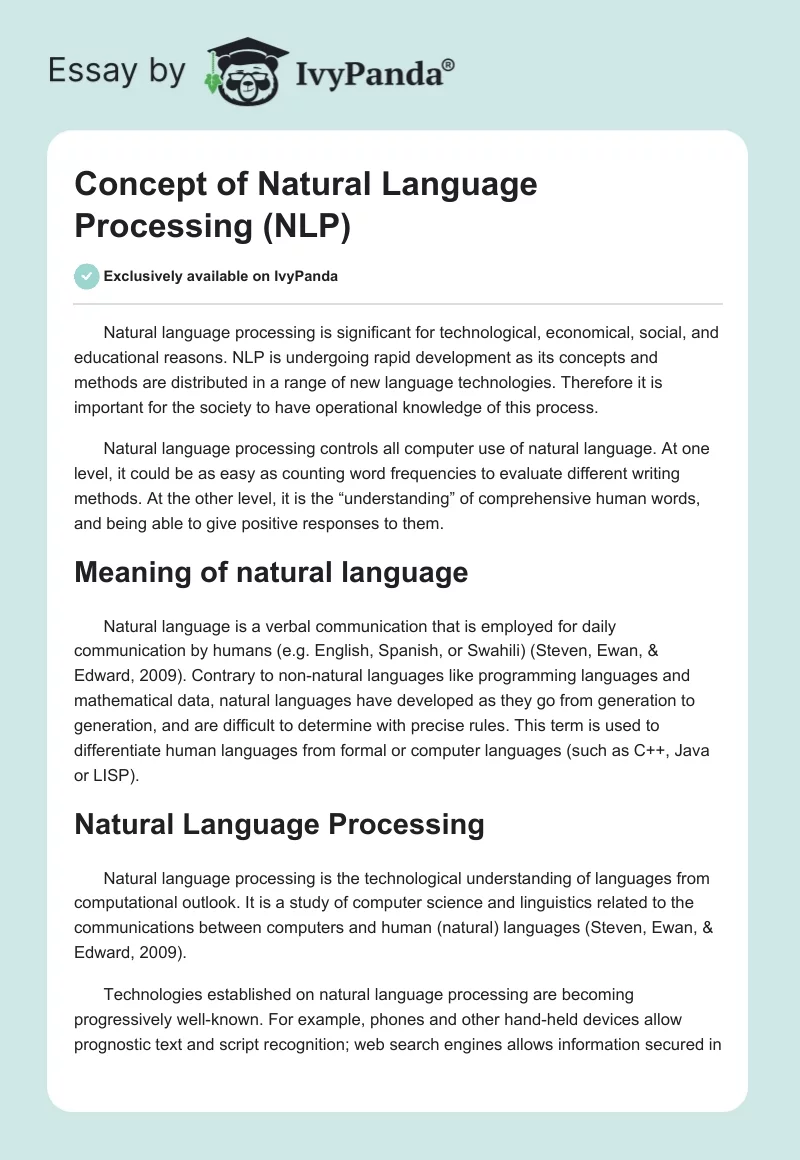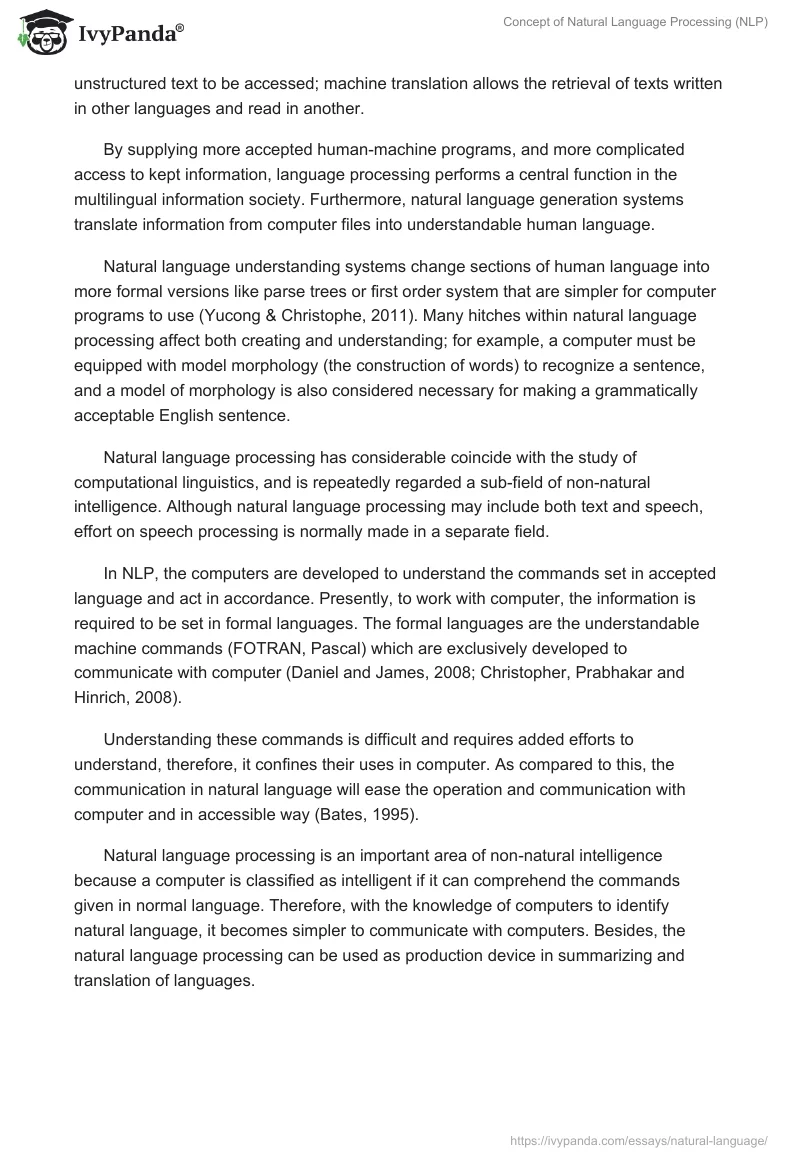Natural language processing is significant for technological, economical, social, and educational reasons. NLP is undergoing rapid development as its concepts and methods are distributed in a range of new language technologies. Therefore it is important for the society to have operational knowledge of this process.
Natural language processing controls all computer use of natural language. At one level, it could be as easy as counting word frequencies to evaluate different writing methods. At the other level, it is the “understanding” of comprehensive human words, and being able to give positive responses to them.
Meaning of natural language
Natural language is a verbal communication that is employed for daily communication by humans (e.g. English, Spanish, or Swahili) (Steven, Ewan, & Edward, 2009). Contrary to non-natural languages like programming languages and mathematical data, natural languages have developed as they go from generation to generation, and are difficult to determine with precise rules. This term is used to differentiate human languages from formal or computer languages (such as C++, Java or LISP).
Natural Language Processing
Natural language processing is the technological understanding of languages from computational outlook. It is a study of computer science and linguistics related to the communications between computers and human (natural) languages (Steven, Ewan, & Edward, 2009).
Technologies established on natural language processing are becoming progressively well-known. For example, phones and other hand-held devices allow prognostic text and script recognition; web search engines allows information secured in unstructured text to be accessed; machine translation allows the retrieval of texts written in other languages and read in another.
By supplying more accepted human-machine programs, and more complicated access to kept information, language processing performs a central function in the multilingual information society. Furthermore, natural language generation systems translate information from computer files into understandable human language.
Natural language understanding systems change sections of human language into more formal versions like parse trees or first order system that are simpler for computer programs to use (Yucong & Christophe, 2011). Many hitches within natural language processing affect both creating and understanding; for example, a computer must be equipped with model morphology (the construction of words) to recognize a sentence, and a model of morphology is also considered necessary for making a grammatically acceptable English sentence.
Natural language processing has considerable coincide with the study of computational linguistics, and is repeatedly regarded a sub-field of non-natural intelligence. Although natural language processing may include both text and speech, effort on speech processing is normally made in a separate field.
In NLP, the computers are developed to understand the commands set in accepted language and act in accordance. Presently, to work with computer, the information is required to be set in formal languages. The formal languages are the understandable machine commands (FOTRAN, Pascal) which are exclusively developed to communicate with computer (Daniel and James, 2008; Christopher, Prabhakar and Hinrich, 2008).
Understanding these commands is difficult and requires added efforts to understand, therefore, it confines their uses in computer. As compared to this, the communication in natural language will ease the operation and communication with computer and in accessible way (Bates, 1995).
Natural language processing is an important area of non-natural intelligence because a computer is classified as intelligent if it can comprehend the commands given in normal language. Therefore, with the knowledge of computers to identify natural language, it becomes simpler to communicate with computers. Besides, the natural language processing can be used as production device in summarizing and translation of languages.
Reference List
Bates, M. (1995). Models of natural language understanding. Proceedings of National Academy of Sciences of the United States of America, Vol.92, NO. 22.
Christopher, D. M, Prabhakar, R., and Hinrich, S. (2008). Introduction to Information Retrieval. Cambridge: Cambridge University Press.
Daniel, J., and James, H. M. (2008). Speech and language Processing. New Jersey, NJ: Pearson Prentice Hall.
Steven, B. E., and Edward, L. (2009). Natural Language Processing with Python. Sebastopol, CA: O’Reilly Media.
Yucong, D., and Christophe, C. (2011). Formalizing Semantic of Natural Language through Conceptualization from Existence. International Journal of Innovation, Management and Technology (2011) 2 (1), pp. 37-42.


